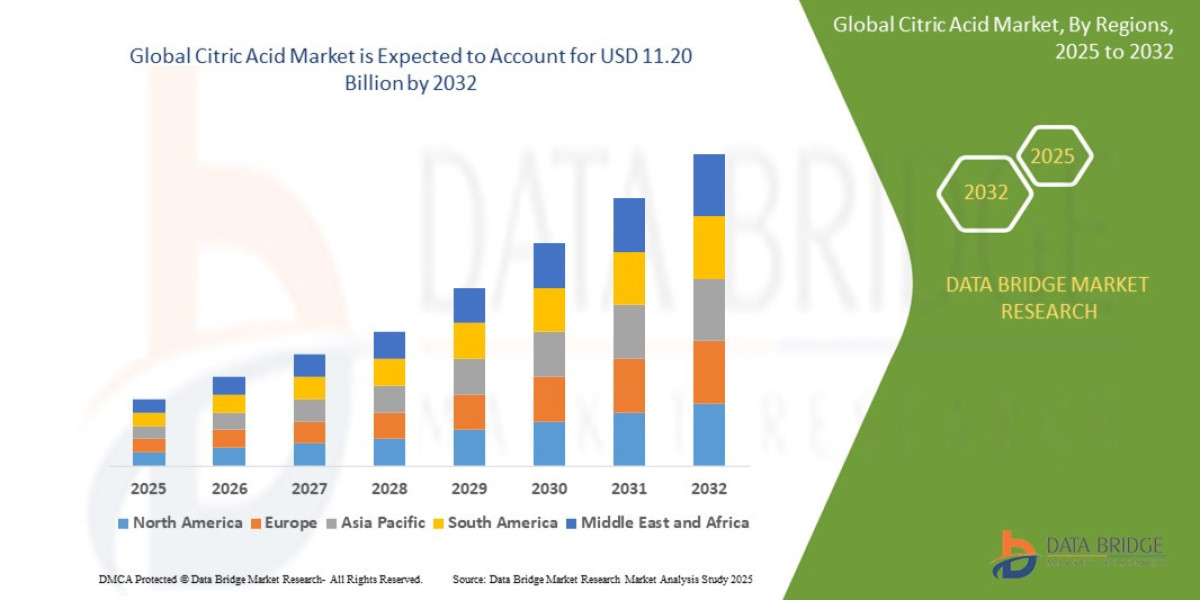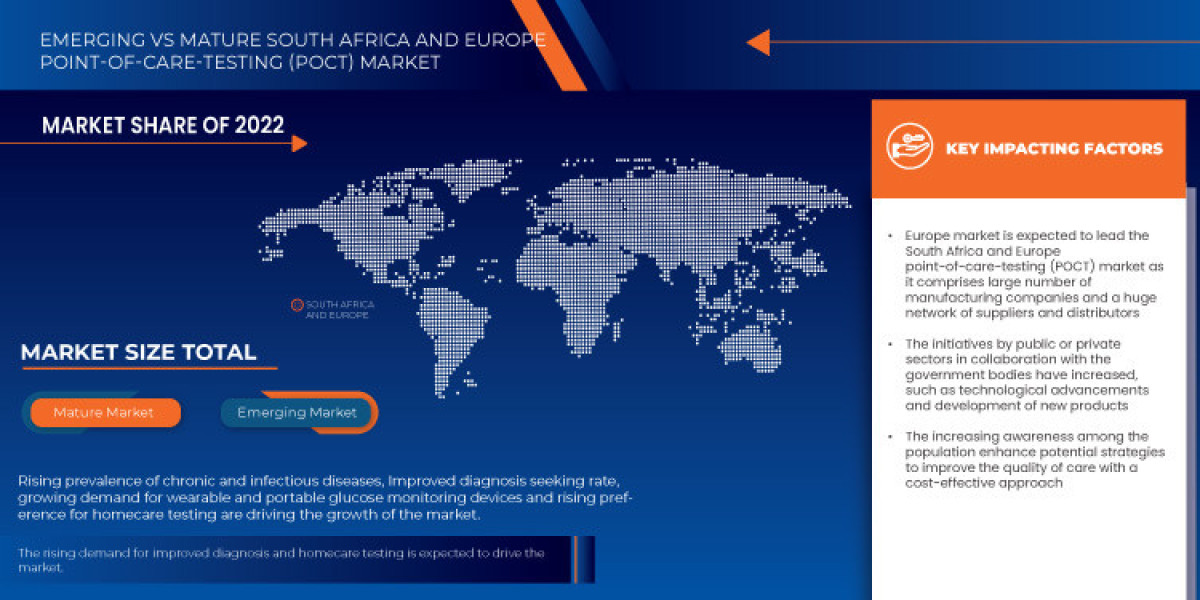Executive Summary
- The global citric acid market size was valued at USD 7.07 billion in 2024 and is expected to reach USD 11.20 billion by 2032, at a CAGR of 5.92% during the forecast period.
Market Overview
Citric Acid is a tricarboxylic acid recognized globally as a versatile and safe ingredient (Generally Recognized as Safe, or GRAS, by the FDA). It is essential to the manufacturing processes of a vast array of downstream industries.
Key Segments
The market can be segmented based on its physical form and application:
By Form:
Anhydrous Citric Acid: The water-free form, highly desirable in dry applications where moisture absorption is a concern, such as beverage mixes, dry soups, and pharmaceutical tablets.
Citric Acid Monohydrate: Contains one molecule of water, used extensively in liquid solutions, syrups, and foods where texture or crystallization rate is less critical.
Liquid/Solution Form: Used primarily in industrial applications like descaling agents and concrete additives.
By Application:
Food and Beverages (F&B): The dominant segment. Used as a flavor enhancer (imparting sourness), pH regulator (acidulant), and natural antimicrobial preservative in soft drinks, confectionery, dairy products, and processed fruits.
Detergents and Cleaners: The fastest-growing non-F&B segment. Citric acid is utilized as a safe, biodegradable chelating agent and water softener, replacing phosphates in environmentally conscious cleaning products.
Pharmaceuticals and Cosmetics: Used as a pH adjuster, effervescence agent (in tablets), and antioxidant stabilizer for vitamins and active pharmaceutical ingredients (APIs).
Industrial Applications: Includes applications in metal finishing, textile dyeing, and as a natural concrete retarder.
Drivers and Current Dynamics
Global F&B Processing Boom: The foundational driver is the continuous global increase in the consumption of packaged, preserved, and convenience foods, particularly in emerging economies like Asia-Pacific and Latin America.
Clean Label and Natural Preservation: As consumers globally reject synthetic preservatives, colorants, and GMOs, Citric Acid benefits significantly. It is perceived as a natural ingredient, making it the preservative of choice for "clean label" formulations.
Growth of Functional Beverages: The surge in ready-to-drink (RTD) teas, energy drinks, and functional waters requires precise pH control for stability, taste profile, and preservation, boosting demand for Citric Acid as a cost-effective acidulant.
Environmental Regulations in Cleaning: Government mandates and consumer pressure to eliminate phosphates and other harsh chemicals from detergents are accelerating the adoption of Citric Acid as a primary, non-toxic, and biodegradable chelating agent in household and industrial cleaners.
The market’s current dynamics are heavily influenced by the availability and price of feedstock (corn and molasses) and the massive production capacity centered in China.
Market Size & Forecast
- The global citric acid market size was valued at USD 7.07 billion in 2024 and is expected to reach USD 11.20 billion by 2032, at a CAGR of 5.92% during the forecast period
For More Information Visit https://www.databridgemarketresearch.com/reports/global-citric-acid-market
Key Trends & Innovations
Innovation in the Citric Acid market focuses less on the molecule itself and more on optimizing production, ensuring supply chain resilience, and identifying specialized applications.
Fermentation Optimization and Biotech: Producers are heavily investing in strain engineering of Aspergillus niger to maximize yields and minimize fermentation time, thus enhancing overall production efficiency and reducing dependence on volume of feedstock. This also includes optimizing downstream purification processes to reduce energy consumption.
Vertical Integration for Feedstock Security: Major producers are increasingly entering into long-term contracts or acquiring facilities near stable sources of corn syrup, cassava, or molasses to buffer against volatile global agricultural commodity prices.
Emergence of Sustainable By-Products: Research is ongoing to monetize the fermentation waste stream. Innovations include developing uses for the fungal biomass or recovering other organic acids, thereby improving the overall environmental profile and cost efficiency of the production process.
Enhanced High-Purity Grades: Demand for ultra-high-purity Citric Acid (USP/EP grade) is accelerating for sensitive applications like injectable pharmaceuticals and biopharma media preparation, driving the need for advanced purification technologies.
The Ecology Trend in Industrial Use: The substitution of traditional, harmful chemicals (like EDTA and STPP) with Citric Acid in water treatment and cleaning formulations is a major structural trend, cementing its role as a key bio-based chemical.
Competitive Landscape
The global Citric Acid market is consolidated at the top, yet highly competitive, characterized by high volume production and tight margins. Competition is primarily focused on production costs, logistics efficiency, and supply chain reliability.
Major Global Players:
Cargill, Incorporated (US): A diversified agricultural giant leveraging massive scale and vertical integration in corn processing to supply the North American and European markets.
Archer Daniels Midland (ADM) (US): Another leading global agribusiness firm with significant processing capabilities and feedstock control.
Jungbunzlauer Suisse AG (Switzerland): A key player focusing on high-quality, specialized ingredients, including non-GMO and pharmaceutical-grade Citric Acid.
Citrique Belge (Belgium): A large European producer known for its high-purity products.
Rizhao Huanghai Biotech and COFCO Biochemical (China): Chinese companies collectively dominate global production volume, leveraging large-scale, cost-effective manufacturing capabilities.
Competitive Strategies:
Cost Leadership via Scale: Chinese manufacturers rely heavily on massive production capacity and favorable government policies to maintain the lowest cost structure, dominating the global commodity trade.
Supply Chain Assurance: Western producers (Cargill, ADM) prioritize reliability, traceability, and secure supply chains to attract multinational F&B and pharmaceutical clients who prioritize consistent quality over marginal price differences.
Product Diversification: Companies like Jungbunzlauer diversify their offerings into derivatives (citrates, esters) and other fermentation-derived products to capture higher margins and serve specialized customer needs.
Sustainability Reporting: Producers are increasingly focusing on environmental, social, and governance (ESG) reporting, highlighting reduced water and energy usage in fermentation to appeal to environmentally conscious downstream industries.
Regional Insights
Regional dynamics are heavily skewed towards APAC in terms of both production and consumption growth.
Asia-Pacific (APAC): The undisputed center of gravity for the Citric Acid market. China alone accounts for a significant majority of global output and is the world’s largest exporter. Consumption growth across India, Southeast Asia, and China is explosive, driven by the rapid expansion of the packaged food, beverage, and industrial sectors.
North America: A mature market characterized by high per capita consumption and strong regulatory preference for domestically produced, non-GMO verified feedstock-based Citric Acid. Growth is steady, driven by the cleaning products and pharmaceutical sectors.
Europe: A highly regulated and mature market where emphasis is placed on sustainability and traceability. European consumption is robust, driven by the region's massive F&B and industrial chemical industries, with a high demand for specialty and high-purity grades.
Latin America and MEA: These regions are highly dependent on imports, primarily from APAC. Market growth here is directly proportional to local urbanization, disposable incomes, and the development of domestic food processing industries.
Challenges & Risks
Despite its stable outlook, the market faces key challenges centered on supply chain stability and environmental impact.
Feedstock Price Volatility: The major cost component—molasses, corn syrup, or cassava—is a volatile agricultural commodity. Price spikes or crop failures can severely impact producer margins, especially for non-integrated players.
Trade Barriers and Tariffs: Given the dominance of Chinese exports, the market is highly susceptible to geopolitical trade tensions, anti-dumping duties, and tariffs, which can disrupt global supply chains and increase costs for regional importers.
Wastewater Management: The fermentation process generates significant volumes of acidic wastewater and fermentation residues. Ensuring efficient and environmentally compliant treatment and disposal of these by-products is a major operating expense and regulatory hurdle, particularly for sulfate-process facilities.
Maintaining High Purity Standards: The need for different grades (food vs. pharma vs. industrial) requires strict quality control and cross-contamination prevention, which is challenging in high-volume production facilities.
Opportunities & Strategic Recommendations
The shift toward sustainability and specialized non-F&B applications presents compelling strategic opportunities for market players.
For Manufacturers:
Focus on Non-F&B Growth: Aggressively target the industrial and cleaning sectors. Citric Acid's utility as a biodegradable chelating agent provides a high-growth, high-value alternative to the competitive F&B segment.
R&D in Biotechnology: Invest in advanced Aspergillus niger strain development and fermentation AI to increase yield, reduce batch cycles, and optimize feedstock conversion, securing a cost advantage.
Geographic Diversification: While China is dominant, setting up production capacity in regions with stable, low-cost access to alternative feedstocks (e.g., specific regions in Southeast Asia or South America) can mitigate geopolitical risk and serve rapidly growing local demand.
For Downstream Users (F&B, Pharma):
Dual Sourcing Strategy: Maintain a two-pronged sourcing strategy: one for high-volume, cost-effective commodity Citric Acid (often from APAC) and another for secure, certified, high-purity, and non-GMO verified supplies (from Western producers).
Explore Citrate Derivatives: Look beyond bulk Citric Acid to utilize specialized derivatives (e.g., sodium citrate for stabilizing milk and processed cheese) for improved functionality and premium product formulation.
For Investors:
Target Specialty Producers: Invest in smaller companies that specialize in pharmaceutical-grade or non-GMO products, where higher margins are sustainable due to stricter quality barriers to entry.
Assess ESG Compliance: Prioritize companies demonstrating leadership in wastewater treatment and waste by-product utilization, as these factors will define long-term regulatory success and cost control.
Browse More Reports:
Global Nootropics Products Market
Global Johnson Neuroectodermal Syndrome Market
Global Natural Fiber Packaging Market
Global Barbecue (BBQ) Sauces and Rubs Market
North America Healthcare Logistics Market
Europe Frozen Ready Meals Market
Global Scoliosis Treatment Market
Global Cloth Self Adhesive Tape Market
Asia-Pacific Aromatherapy Market
Global Crystallization Equipment Market
Global Sugar Confectionery Market
North America Genetic Testing Market
Global Botanical Extracts Market
Global Feed Flavors and Sweeteners Market
Global Industrial Floor Scrubbers Market
Global Plastic Compounding Market
Global Squamous Cell Carcinoma Treatment Market
Global Caffeine Supplements Market
Europe Aromatherapy Market
Global Custom Procedure Kits Market
Europe Testing, Inspection, and Certification (TIC) Market for Building and Construction – Industry Trends and Forecast to 2028
Global Blood Processing Devices and Consumables Market
Global Eosinophil Driven Diseases Market
Global Polyphenylene Market
North America Network Test Lab Automation Market
Middle East and Africa Footwear Market
Global Influenza Diagnostics Market
Global Progressive Familial Intrahepatic Cholestasis Type 2 Treatment Market
Middle East and Africa Testing, Inspection, and Certification (TIC) Market for Building and Construction – Industry Trends and Forecast to 2028
Global Sulfur Fertilizers Market
Asia-Pacific Specialty Gas Market
North America Wireless Data Radio Modem Market
About Data Bridge Market Research:
An absolute way to forecast what the future holds is to comprehend the trend today!
Data Bridge Market Research set forth itself as an unconventional and neoteric market research and consulting firm with an unparalleled level of resilience and integrated approaches. We are determined to unearth the best market opportunities and foster efficient information for your business to thrive in the market. Data Bridge endeavors to provide appropriate solutions to the complex business challenges and initiates an effortless decision-making process. Data Bridge is an aftermath of sheer wisdom and experience which was formulated and framed in the year 2015 in Pune.
Contact Us:
Data Bridge Market Research
US: +1 614 591 3140
UK: +44 845 154 9652
APAC : +653 1251 975
Email:- corporatesales@databridgemarketresearch.com








